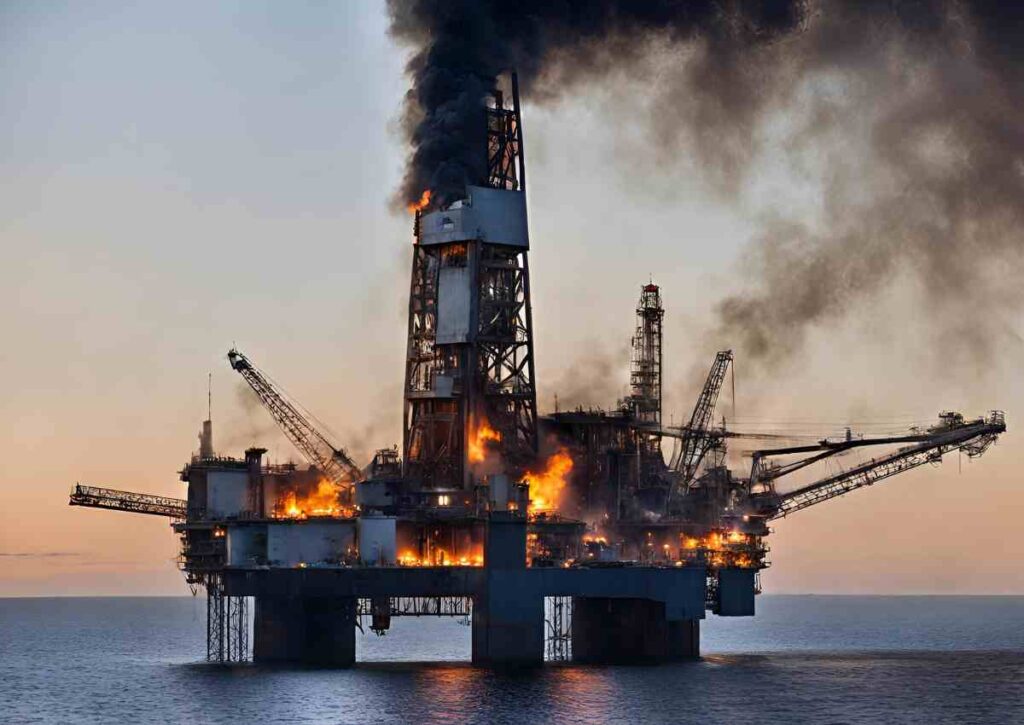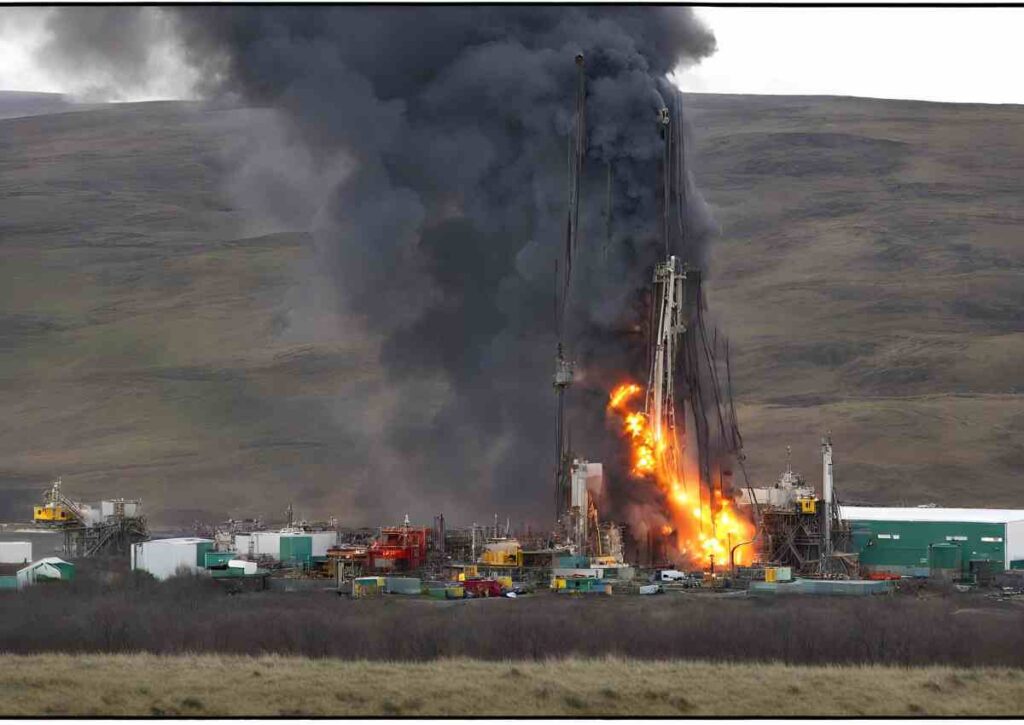Drilling rigs, the unsung heroes of the Oil & Gas industry, delve deep into the earth’s crust to extract the lifeblood of modern civilization: crude oil and natural gas.
These towering structures, both on land and offshore, represent a fusion of human intellect and mechanical prowess.
However, behind the façade of technological marvels lies a sobering reality – the inherent dangers faced by those who work tirelessly on these rigs.
In this comprehensive exploration, we delve into the world of drilling rig accidents, unraveling the complexities, risks, and consequences that underscore this critical aspect of the energy sector.
Understanding Drilling Rigs: The Backbone of Oil & Gas Exploration
Before delving into the intricacies of drilling rig accidents, it’s essential to grasp the fundamental role these structures play in the extraction of hydrocarbons.
Drilling rigs serve as the nerve center of oil and gas exploration, employing a sophisticated blend of machinery and manpower to bore into the earth’s crust.
From the vast expanses of the Permian Basin to the sprawling offshore platforms in the Gulf of Mexico, these rigs form the lifeline of the industry, driving global energy production forward.
Inland Rigs: The Heart of Texas’ Oil Legacy

Texas, often hailed as the heartland of America’s oil legacy, boasts a rich tapestry of inland drilling rigs scattered across its expansive landscape.
The Permian Basin, a veritable powerhouse in the world of oil production, stands as a testament to the state’s unrivaled prowess in the industry.
With hundreds of rigs operating within its confines, this region has played a pivotal role in shaping the trajectory of the global energy market.
Similarly, the Eagle Ford Shale, with its sprawling network of rigs spanning across South Texas, further cements Texas’ status as a dominant player in the realm of oil and gas exploration.
Offshore Platforms: Conquering the Depths of the Gulf
Off the shores of Texas lie a network of offshore platforms that push the boundaries of drilling technology to unprecedented depths.
The Gulf of Mexico, home to a myriad of offshore rigs, serves as a crucible for innovation and exploration.
From behemoths like Stones and Perdido, which stand as testaments to human ingenuity, to the countless other rigs dotting the Gulf’s expanse, these offshore platforms represent the frontline of deep-sea exploration.
Despite the logistical challenges and inherent risks, these rigs continue to play a pivotal role in unlocking the vast reserves lying beneath the ocean floor.
The Perils of the Profession: Understanding Drilling Rig Accidents

However, amidst the industry’s achievements and technological advancements, lurks a grim reality – the ever-present threat of drilling rig accidents.
These accidents, ranging from minor mishaps to catastrophic events, underscore the inherent risks faced by those who toil in this unforgiving environment.
Whether it’s a mechanical failure, an environmental hazard, or human error, the consequences of these accidents can be devastating, leading to injuries, fatalities, and long-term environmental damage.
Group Fatalities: Tragedy Strikes on Drilling Rigs
In the high-stakes world of drilling rigs, even a minor oversight can have catastrophic consequences, resulting in group fatalities that reverberate throughout the industry.
The Piper Alpha disaster of 1988 serves as a stark reminder of the potential dangers lurking on offshore platforms, where multiple factors, including management failures and safety lapses, culminated in a tragedy of unprecedented proportions.
Similarly, other incidents, both onshore and offshore, highlight the critical need for stringent safety protocols and vigilant oversight to prevent future catastrophes.
Single Fatalities: The Human Cost of Drilling Rig Accidents

Beyond the headlines and high-profile disasters lie the stories of individual workers who pay the ultimate price for their profession.
From motor vehicle accidents to machinery malfunctions, drilling rig accidents can claim lives in an instant, leaving behind grieving families and shattered communities.
Each incident serves as a poignant reminder of the human cost of our dependence on fossil fuels, prompting calls for greater accountability and safety measures within the industry.
Legal Recourse: Seeking Justice for Drilling Rig Accident Victims
In the aftermath of a drilling rig accident, navigating the complex legal landscape can be daunting for victims and their families.
Whether it’s pursuing compensation for injuries, seeking accountability for negligence, or advocating for stricter safety regulations, legal recourse plays a crucial role in ensuring justice is served.
Landmark cases, such as the Patterson 219 oil rig fire and the Eagle Ford Shale drilling rig fire, highlight the importance of experienced representation in holding responsible parties accountable and securing fair compensation for victims.
Conclusion: Toward a Safer Future
As we navigate the complexities of the modern energy landscape, it’s imperative that we confront the realities of drilling rig accidents head-on.
From implementing stringent safety protocols to fostering a culture of accountability and transparency, there’s much work to be done to ensure the safety and well-being of those who power our world.
By learning from past mistakes, advocating for change, and prioritizing the human factor in our pursuit of progress, we can strive towards a future where drilling rig accidents are relegated to the annals of history, and where the energy industry stands as a beacon of innovation, sustainability, and safety.
FAQs
What are the common causes of drilling rig accidents?
Drilling rig accidents can occur due to various factors, including mechanical failures, environmental hazards, human error, and inadequate safety protocols.
These accidents may result from equipment malfunctions, blowouts, fires, falls, or electrical exposure, highlighting the multifaceted nature of the risks involved in oil and gas exploration.
How can drilling rig accidents impact workers’ safety?
Drilling rig accidents pose significant risks to workers’ safety, ranging from minor injuries to fatalities.
Workers may face dangers such as burns, inhalation of toxic fumes, falls from heights, or even drowning in offshore incidents.
Additionally, accidents can lead to long-term health issues, psychological trauma, and economic hardship for victims and their families.
What legal options are available for victims of drilling rig accidents?
Victims of drilling rig accidents may pursue legal recourse to seek compensation for their injuries, medical expenses, lost wages, and pain and suffering.
Depending on the circumstances of the accident, legal avenues may include personal injury claims, wrongful death lawsuits, or seeking remedies under federal maritime law, such as the Jones Act or the Outer Continental Shelf Lands Act.
How can drilling companies mitigate the risks of accidents on their rigs?
To mitigate the risks of accidents, drilling companies must prioritize safety measures and implement robust protocols aimed at preventing incidents and protecting workers.
This includes regular equipment inspections, safety training for personnel, adherence to regulatory standards, emergency response preparedness, and fostering a culture of safety awareness and accountability throughout the organization.
What are the environmental consequences of drilling rig accidents?
Drilling rig accidents can have severe environmental repercussions, including oil spills, groundwater contamination, and damage to marine ecosystems.
These incidents not only pose immediate threats to wildlife and ecosystems but also have long-term ecological impacts, disrupting fragile ecosystems and jeopardizing biodiversity.
Cleanup efforts can be costly and complex, requiring extensive resources and expertise to mitigate environmental damage effectively.
How can the public contribute to preventing drilling rig accidents?
The public can play a role in preventing drilling rig accidents by advocating for stronger regulatory oversight, supporting initiatives for renewable energy development, and holding companies accountable for their environmental and safety practices.
Additionally, raising awareness about the risks associated with fossil fuel extraction and supporting efforts to transition to cleaner, sustainable energy sources can help reduce reliance on hazardous drilling practices.
Also Read
Cotton Drill: Crafting Comfort With Precision









